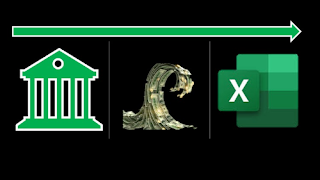Learn how Money in Excel can be used to create financial reports and complement traditional accounting software like QBO
Platform: Udemy
Status: Available
Duration: 3 Hours
Price: $94.99 $0.00
Note: Udemy FREE coupon codes are valid for maximum 3 days only. Look for "Get Coupon" orange button at the end of Description. This post may have affiliate link & we may get small commission if you make a purchase.
What you'll learn
- What Money In Excel can be useful for
- How to setup the Money In Excel Template
- How to connect Money In Excel to financial institutions
- How to add account or categories and subcategories to data
- How to sort business and personal data
- How to create an income statement that may be useful for taxes
- How to create a balance sheet or statement of net position
- How to use the Money in Excel budgeting template
- Microsoft Office would be preferable
Money in Excel can be used to construct a small business income statement which could be useful when preparing an income tax return Schedule C Profit or Loss From Business.
The Money in Excel template can also be used to complement accounting software such as QuickBooks. For example, many small businesses use accounting software like QuickBooks to record financial transactions and construct financial statements for their business. However, far fewer use financial accounting software to fulfill the same functions for their individual finances, a task that may be accomplished with Money in Excel.
Unlike financial accounting software, Money in Excel will also bring in balance sheet data directly from our financial institutions and put it in one location, balance sheet data like checking accounting balances, savings accounting balances, brokerage account balances, credit card balances, loan balances, and mortgage balances.
Accounting software like QuickBooks does not generally pull balance sheet balances directly from financial institutions because accounting software is designed to construct the ending balances using the double entry accounting system. Once the balance sheet balances have been constructed traditional accounting software will compare our book balance to the institution balance using tools such as bank reconciliations.
This course will cover how to access the Money in Excel template and connect it to financial institutions, downloading financial data.
We will work through a practice problem, imagining we are a small business wanting to construct an income statement needed for our income tax preparation at year end, income tax reported on a Schedule C Profit or Loss From Business Form. As we work the practice problem, we will compare the process to what may be done using traditional accounting software like QuickBooks.
We will then investigate construction of a personal balance sheet using Money in Excel, comparing how the process may be done using traditional accounting software.
The course will also cover other functions provided by Money in Excel including budgeting options and recurring transactions.
Who this course is for:
- Business owners who report business income using a Sch. C on their income taxes
- Business owners & individuals who would like an easy snapshot of their financial data
- Accounting and Bookkeeping professionals
- Accounting and business students

